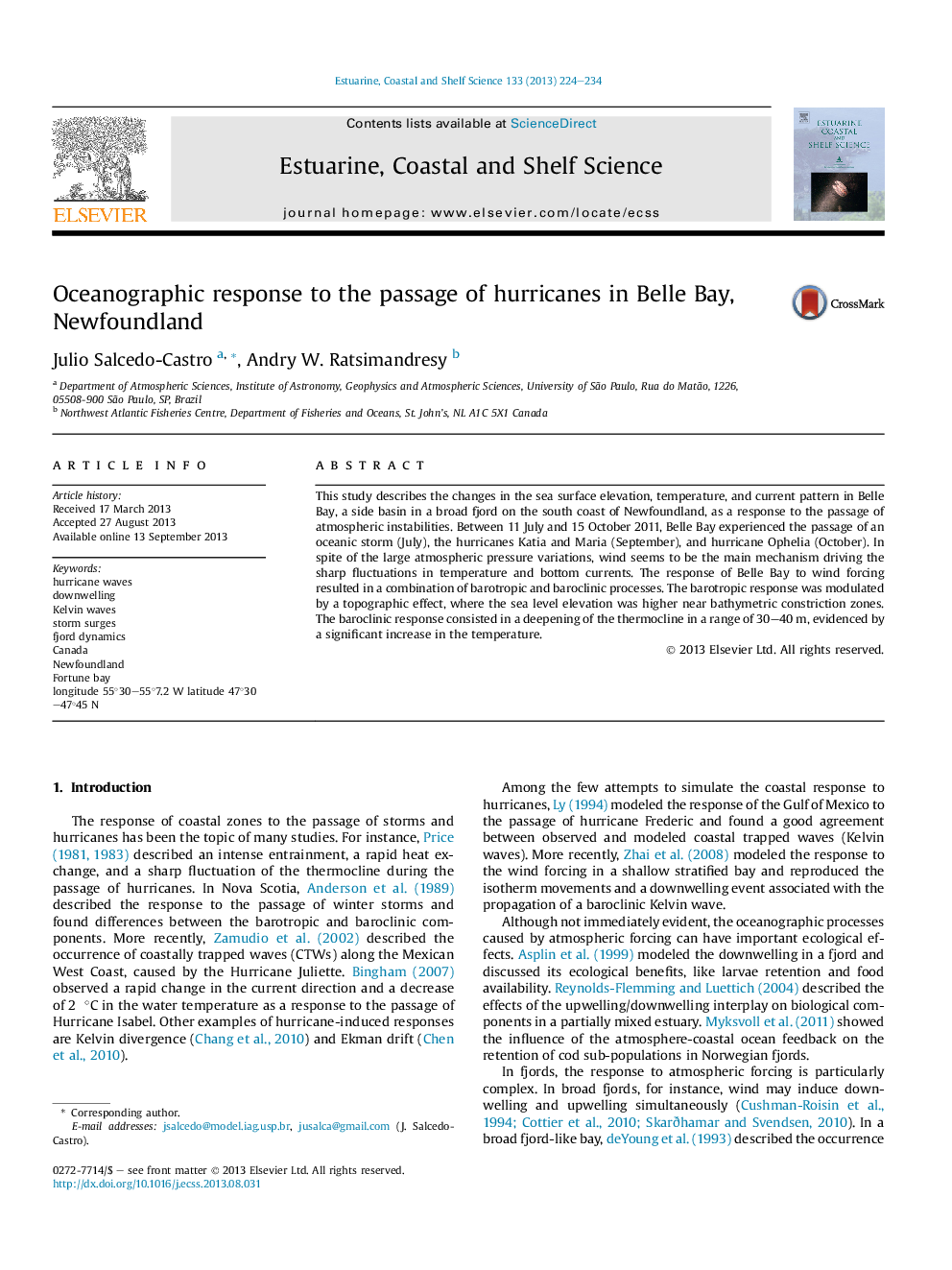| Article ID | Journal | Published Year | Pages | File Type |
|---|---|---|---|---|
| 6385046 | Estuarine, Coastal and Shelf Science | 2013 | 11 Pages |
Abstract
This study describes the changes in the sea surface elevation, temperature, and current pattern in Belle Bay, a side basin in a broad fjord on the south coast of Newfoundland, as a response to the passage of atmospheric instabilities. Between 11 July and 15 October 2011, Belle Bay experienced the passage of an oceanic storm (July), the hurricanes Katia and Maria (September), and hurricane Ophelia (October). In spite of the large atmospheric pressure variations, wind seems to be the main mechanism driving the sharp fluctuations in temperature and bottom currents. The response of Belle Bay to wind forcing resulted in a combination of barotropic and baroclinic processes. The barotropic response was modulated by a topographic effect, where the sea level elevation was higher near bathymetric constriction zones. The baroclinic response consisted in a deepening of the thermocline in a range of 30-40Â m, evidenced by a significant increase in the temperature.
Related Topics
Physical Sciences and Engineering
Earth and Planetary Sciences
Geology
Authors
Julio Salcedo-Castro, Andry W. Ratsimandresy,
